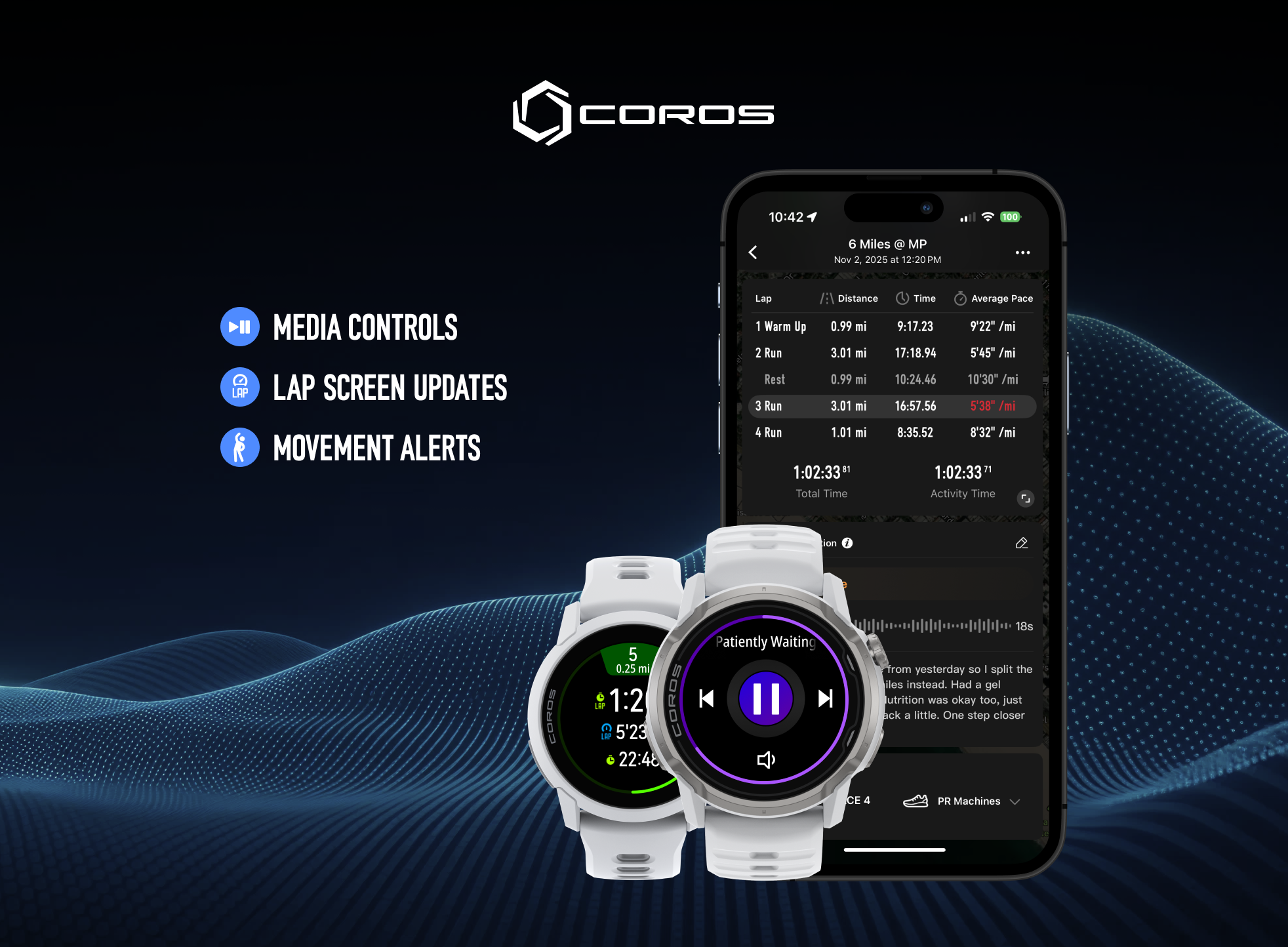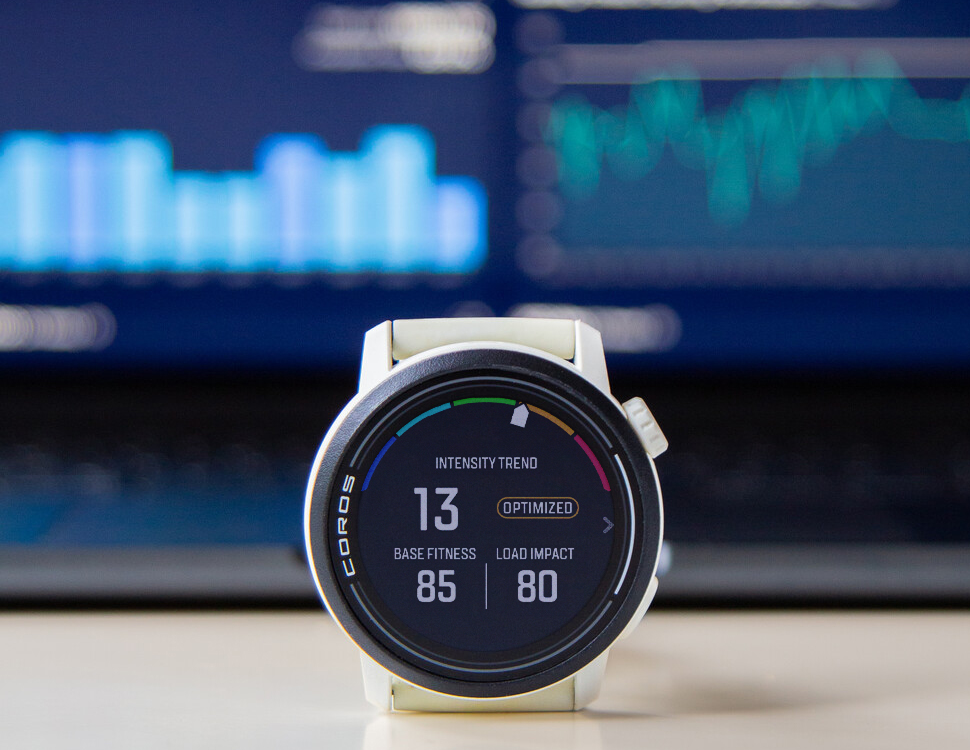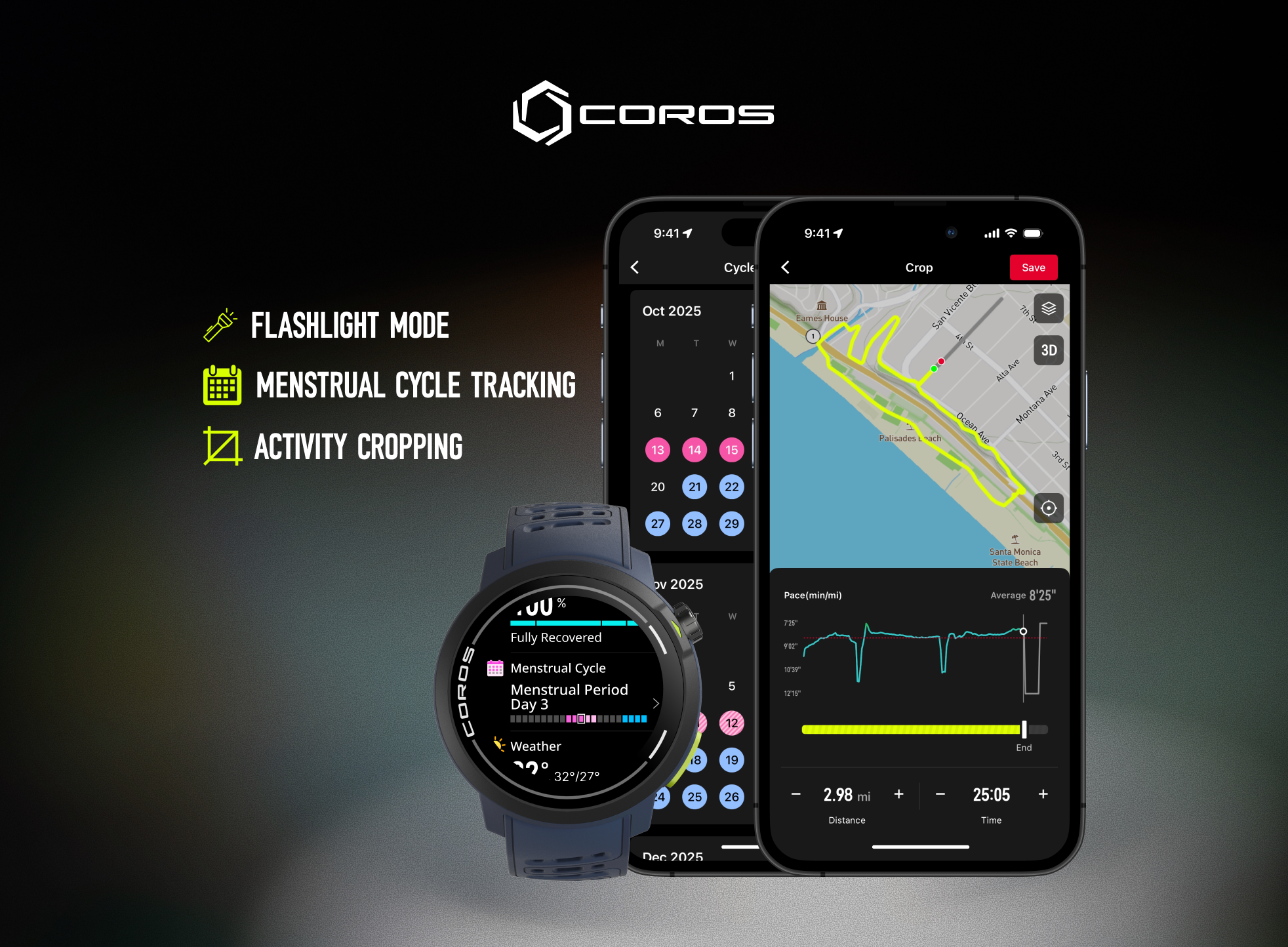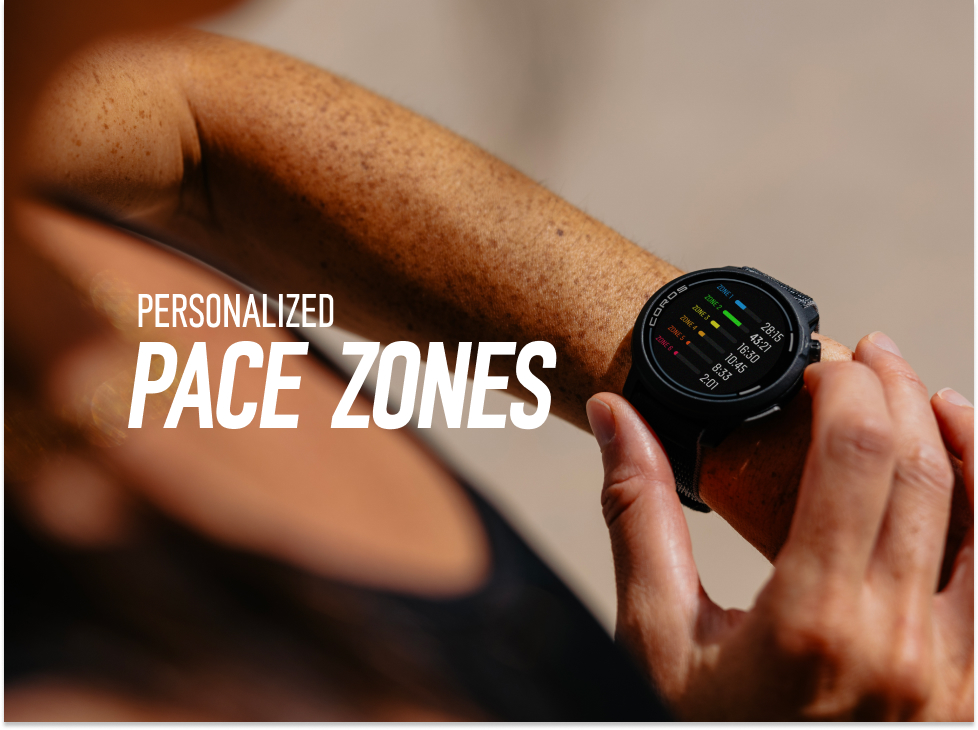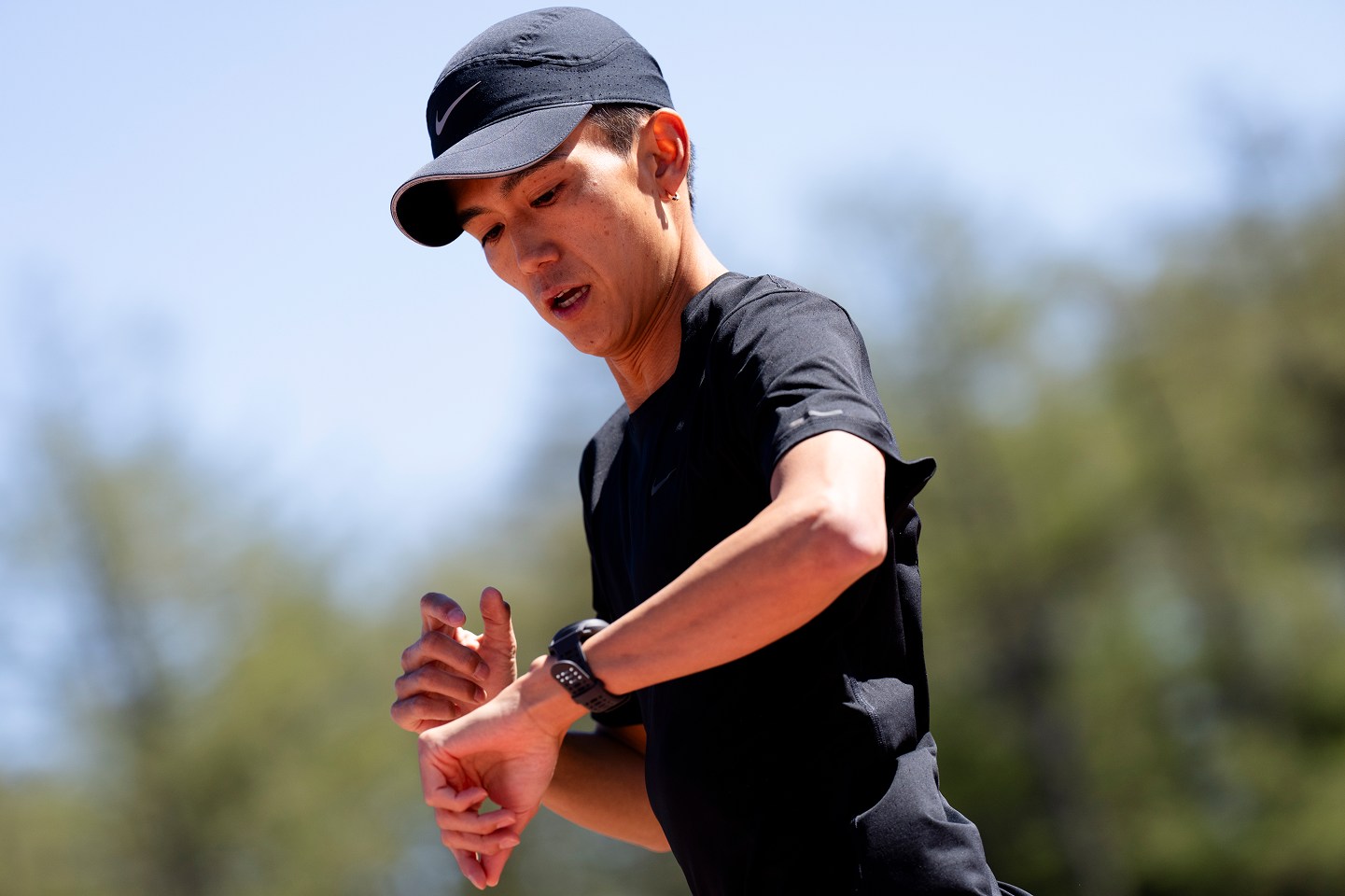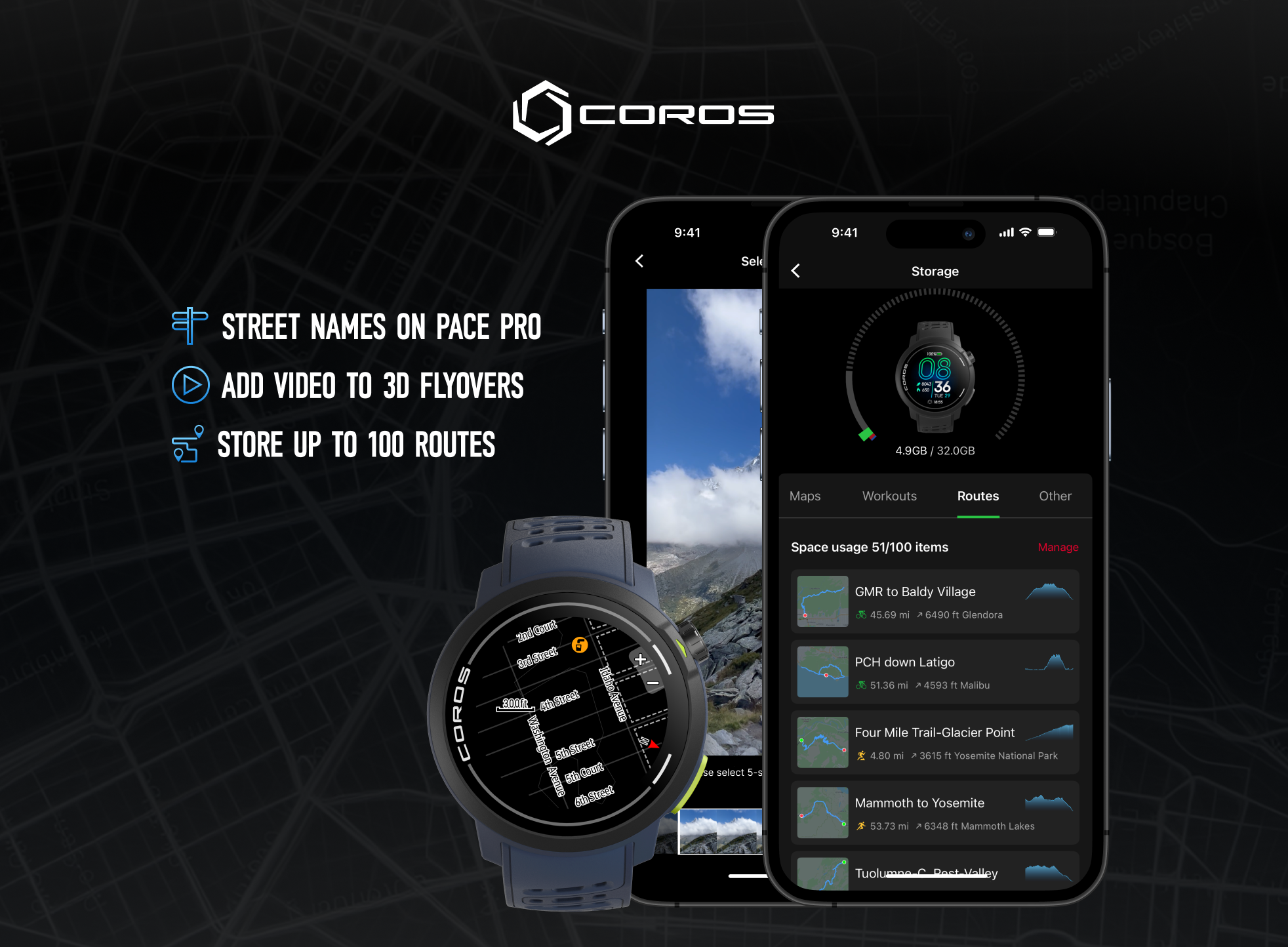At COROS, we are continuously looking to improve your user experience and facilitate your training journey through easy-to-understand metrics and graphs. This is why we would like to introduce our Running Fitness Test and Resting HR as part of our Fitness Tests.
Running Fitness Test
EvoLab uses the relationship between your pace and HR to evaluate your running fitness through various intensities. If you are going through an off-season or recovering from an injury, you may not hit all intensity zones for a while, potentially limiting specific metrics’ accuracy. This is why we are introducing the Running Fitness Test, a quick and easy way to assess and update your primary EvoLab metrics.

| Time | Steps | Description |
|---|---|---|
| 5min | Warm Up | Open. |
| 25min | Marathon Pace | This intensity reaches the sweet spot to determine the best relationship between pace and HR. EvoLab will use your steady state throughout this stage to determine your threshold. |
| 3min | 10km Pace | This stage begins a shortened incremental test to increase your HR linearly. |
| 3min | 5km Pace | This stage follows the previous one with a slightly faster pace. We aim for your HR to reach >90% of your HR Reserve. |
| 3min | Slightly faster (optional) | If your HR is still <90% of your HR Reserve, you must complete this 3rd incremental stage. |
| 3min | Slightly faster (optional) | If your HR is still <90% of your HR Reserve, you must complete this 4th and last incremental stage. |
| 5min | Cool Down | Open. |
Once the Running Fitness Test is complete, Evolab then determines a few metrics right away:
- Threshold Pace
- Threshold HR
- HR max

When And Why Should You Do The Running Fitness Test?
When
We recommend completing this test every three months and far away from any race you may have. Wait to meet this test right before a race!
Why
This test helps assess your running improvements and ensure EvoLab captures the most accurate data from your training.
Coaching Insights
- Make sure to complete a few resting HR measurements before the test. This will ensure more accurate calculations. See below for more information on this test.
- Step back from high-intensity training a few days before the test to ensure you are well-rested. This test leads up to >90% of your HR Reserve, so expect it to be hard.
- Be mindful of the terrain you will be running at to limit some possible variables that may alter the results (elevation, temperature, altitude, trail, etc.)
- If you believe the new metrics from the test are inaccurate, you can turn off the Running Fitness Ability directly on the app.
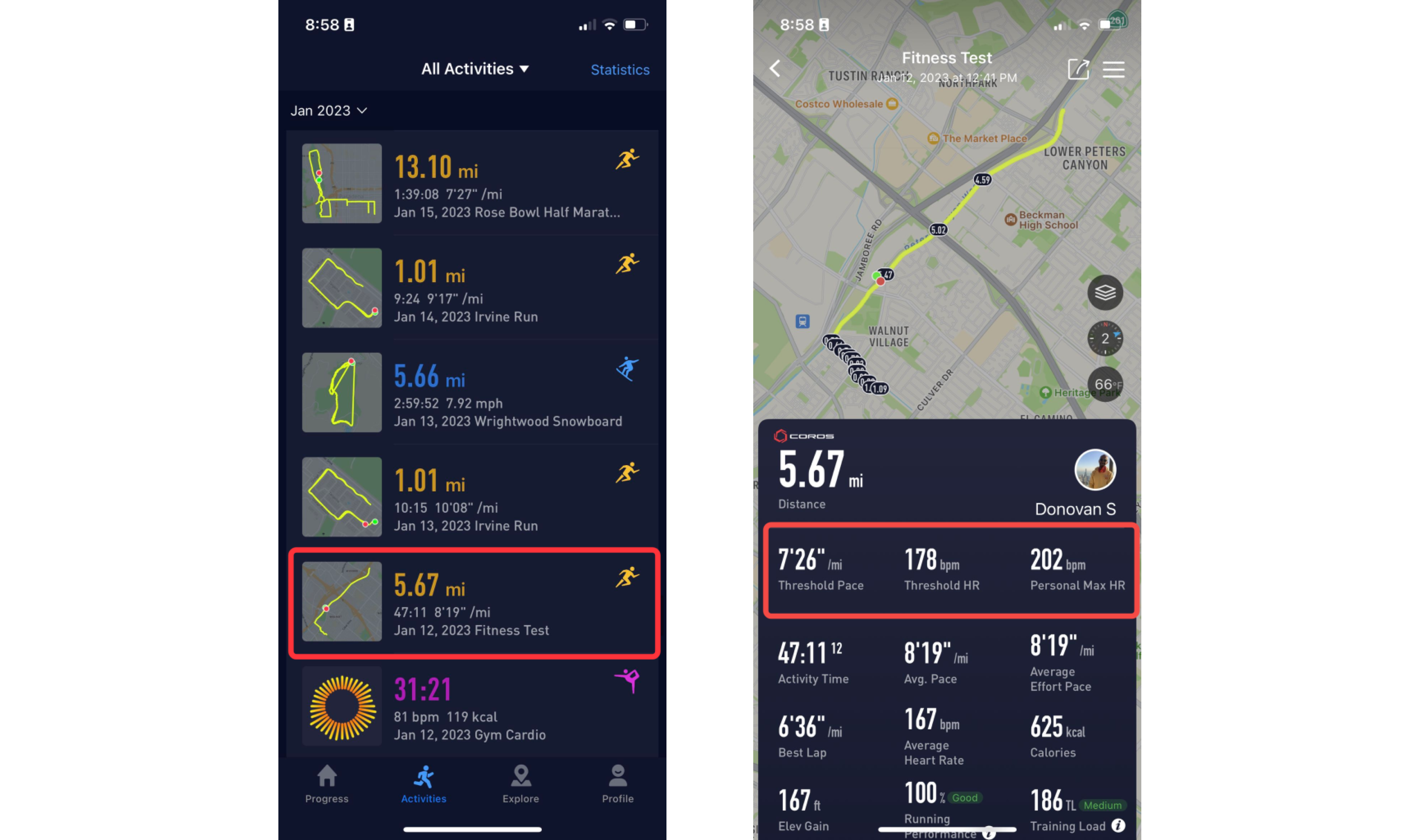
Resting Heart Rate
As mentioned earlier, we use HR Reserve during the Running Fitness Test to get accurate results. Because HR Reserve is the difference between your HR max and your resting HR, your resting HR needs to be accurate for the Running Fitness test to be as well.
Resting HR must be taken manually as part of the Fitness Tests to ensure consistency and accuracy. We recommend completing the test every morning right after you wake up.

Coaching Insights
Below you will find a user’s resting HR separated between automatic and manual measurements over the past few weeks. We can see that manual resting HR is lower and more consistent than automatic measurements.
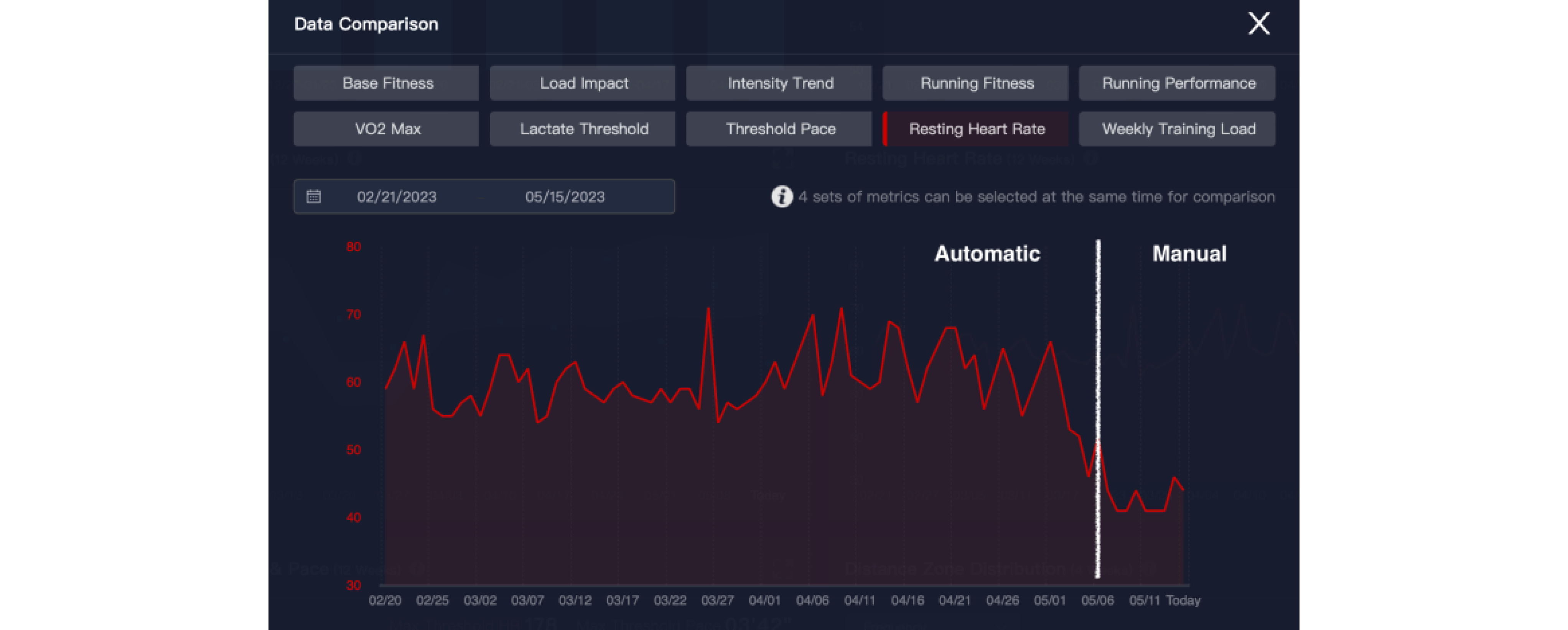
Resting HR graph between automatic and manual measurements.
More Questions?
If you wish to get individualized insights from your data, please email us at coach@coros.com, and we will be happy to help you in your training journey!

/filters:quality(90)/fit-in/970x750/coros-web-faq/upload/images/edc57eb18f924148aee1f26b8a0ce1b4.png)
